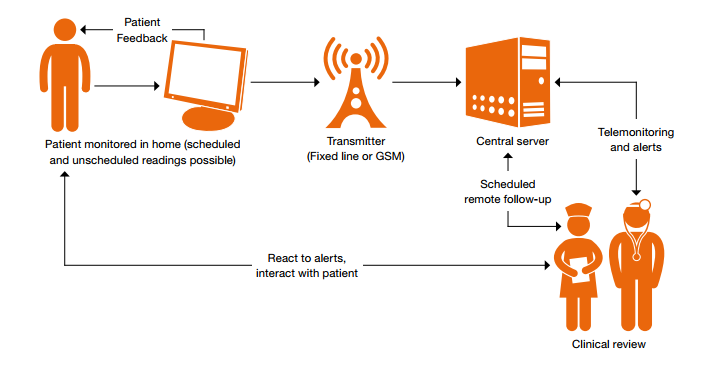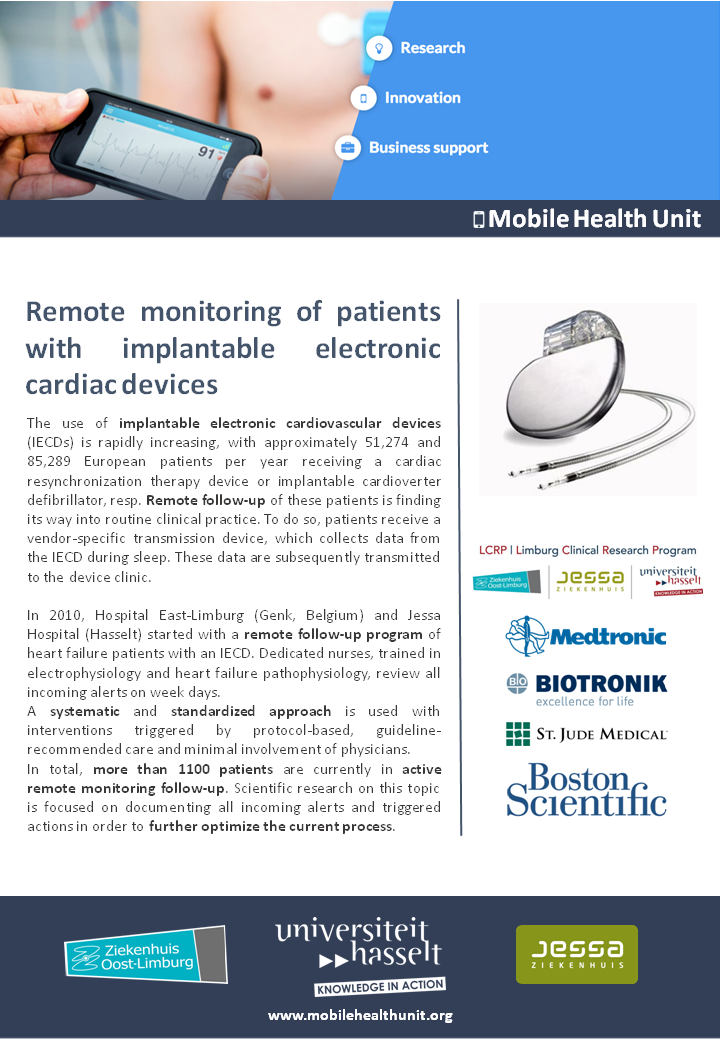Remote monitoring of Cardiac Implantable Electronic Devices (CIEDs)

Figure: Remote monitoring technology allows for automatic and regular data transfer from the cardiac device, via radio frequency, to an amplifier box at the patient’s home. This amplifier in turn sends the data over a wireless network or telephone line to a central server of the technology supplier. The doctor can consult the data by logging onto a secured Web service from the supplier. Reference: ‘Moving towards good practice in the reimbursement of CIED telemonitoring. A study conducted in five European countries: Germany, Italy, Spain, the Netherlands and the UK.’
In 2010, Hospital East-Limburg and Jessa Hospital started with a remote follow-up program of patients with an IECD. Dedicated nurses, trained in electrophysiology and heart failure pathophysiology, review all incoming alerts on week days. A systematic and standardized approach is used with interventions triggered by protocol-based, guideline-recommended care and minimal involvement of physicians. In total, more than 1100 patients are currently in active remote monitoring follow-up. Scientific research on this topic is focused on documenting all incoming alerts and triggered actions in order to further optimize the current process.
Publications:
Smeets et al. ‘Protocol-driven remote monitoring of cardiac resynchronization therapy as part of a heart failure disease management strategy’.






